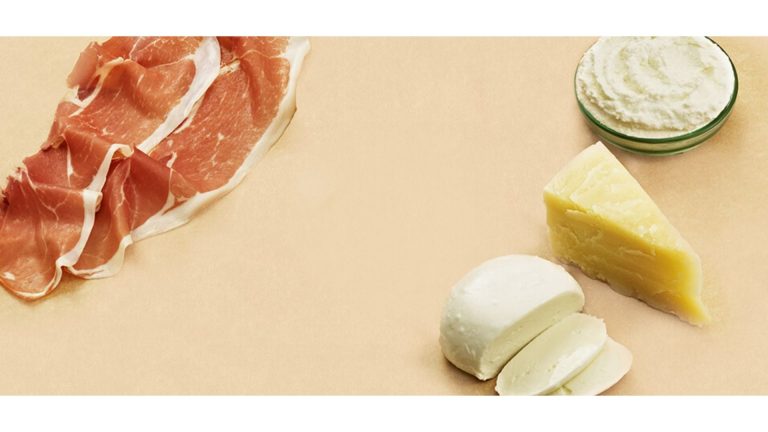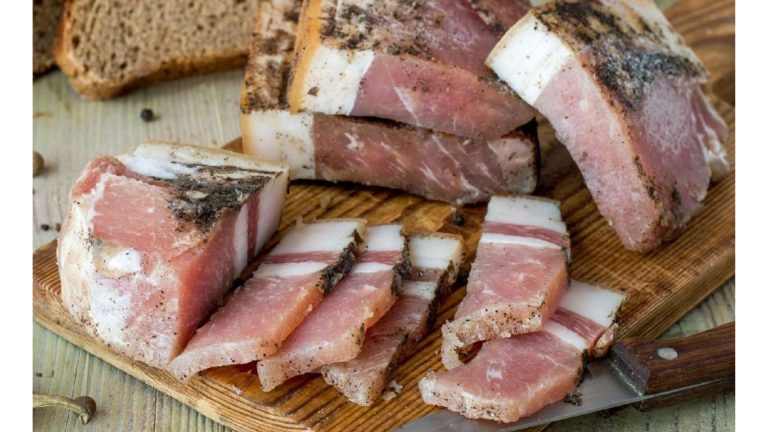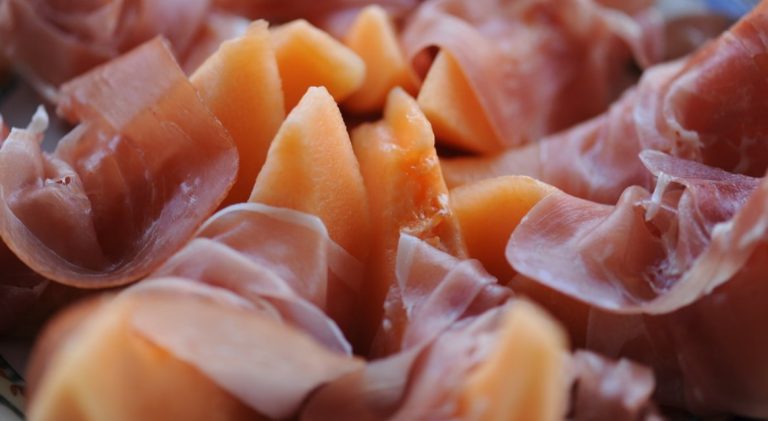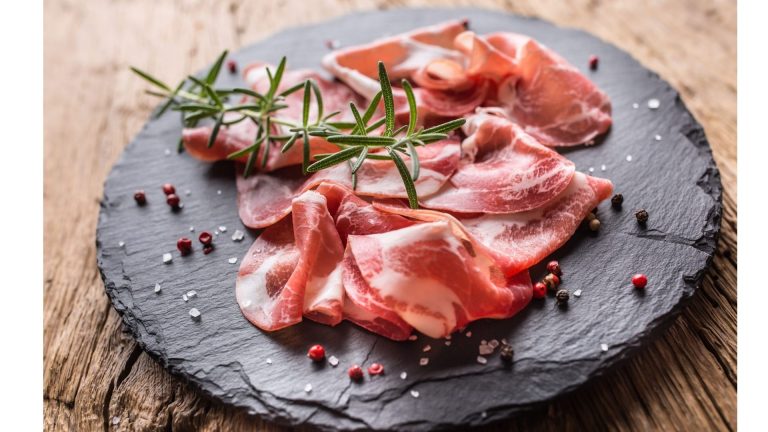Do You Wash Prosciutto?
Prosciutto is cured ham made from a pig’s hind leg.
It has a long history in Italy, where it was originally produced in the area around Parma.
Prosciutto is typically made with pig’s legs which are salted and air-dried, after which they are wrapped in paper and pressed into blocks.
Prosciutto is a ham, and as such, it needs to be soaked in water for a few days to remove the salt.
Wash prosciutto in cold water, and rinse with running water to remove excess moisture.
After that, place the prosciutto in an oven at 300 degrees F for an hour to dry it out. This process is known as curing.
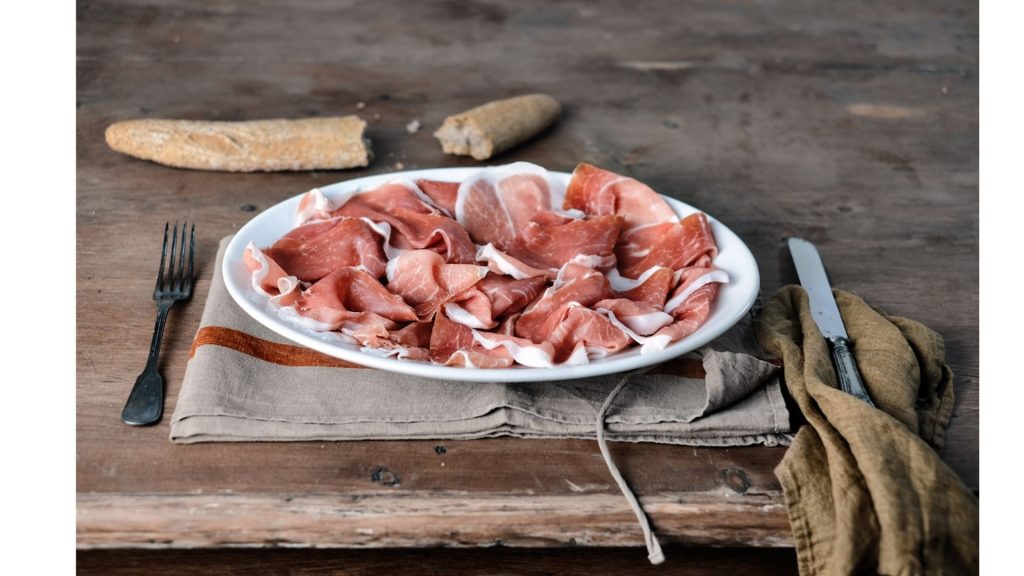
Table of Contents
Steps to cure prosciutto
There are eight basic steps to cure prosciutto. Here you go:
Choose your ham wisely
The hindquarter is one of the most valuable parts of the animal. Do it with care because you will be making a significant investment.
Large animals are fat and flabby, so choose a beast that weighs in at around 300 pounds or 150 kilos.
The hindquarter should weigh between 25 and 35 pounds.
When you get to that point. The foot, skin, and bones of the hindquarter should not be damaged.
Preparing the ham for curing
The skin and fat from the top of the ham must be removed first. There is a large portion of ham at the top and a small portion at the bottom.
It is a good idea to not remove too much fat.
You should leave a thin layer of fat on the rump.
Only a quarter or a third of the rump should have the skin removed.
It’s not necessary to remove the hip bone if you don’t want to damage the femur, the round ball end of the leg bone.
If you want the ham to be uniform in width to the rest of the ham, round off the top of the thigh with small pieces of meat.
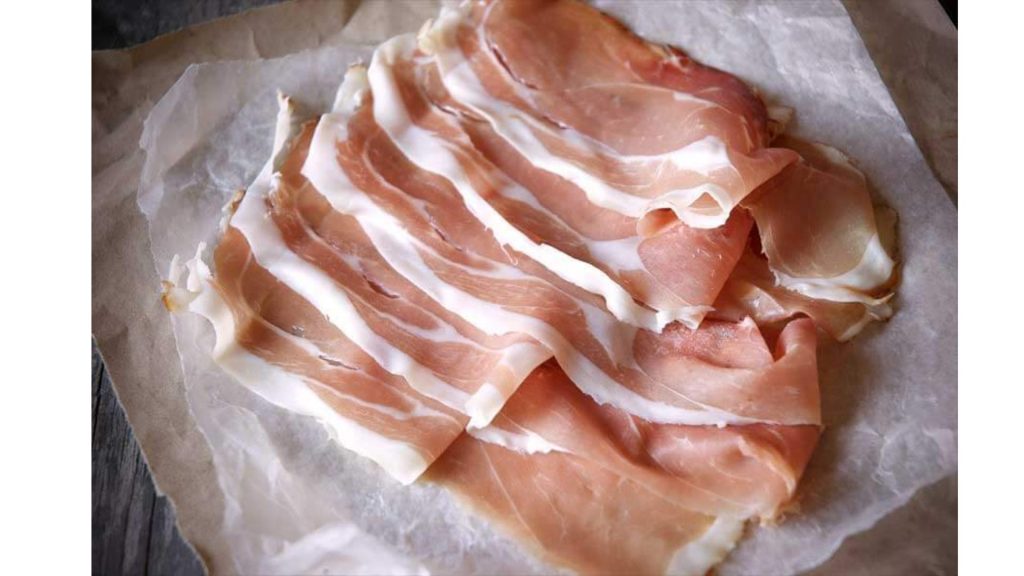
Pressing the femoral artery
Once you have shaped your ham, you can squeeze the femoral arteries with movement from top to bottom.
The arch of the thigh to the foot is touched by pressing the thumbs down from the top part of the ham.
It should remove the blood from the arteries. The blood ought to be washed away.
The first salting
The most important step in curing meat is salting. The only salt that can be used is unrefined.
It’s never a good idea to use table salt that has Additive or iodized salt.
The USFDA recommends curing salt or pink salt with a combination of salts.
Pure unrefined salt is what I like to use. It’s ideal for curing meats naturally in the cold winters.
The use of curing salt is recommended if you live in a warm climate. Place ham on a surface that is cut side down.
The ham should be covered with plenty of salt to concentrate on the part of the rind and fat that is lean meat.
You can scrub the salt into the rind and fat area with your hand. This process is referred to as scrubbing.
Continue to press the salt into the flesh in large circular movements as if you are massaging the flesh.
It requires more than just placing the salt on the surface. The salt needs to be rubbed into the rind and fat.
The ham should be turned over to salt the red meat after salting the rind and fat. There is a bone around the head of the femur.
Place the meat in a salt-covered container. There is no need for the salt to be rubbed into the meat.
If you want the salt to adhere to the meat, brush it over the flesh.
After salting the ham, place it on a shelf in a cold room at a temperature of 37 to 39 degrees Fahrenheit or 3 to 4 degrees Celsius.
The ham should be cut side up to keep it horizontal. If the salt from the rind falls on the lean red zone it will cause the meat to be overly salty.

The second salting
After five days of rest, take the ham and brush the salt away.
The salt in the ham will penetrate the muscles more easily if you massage it vigorously. You should repeat the process of salting as you did the first time.
Sprinkle the salt over the lean area and scrub the rind and fat areas. If you want to keep the ham for another week, store it on a shelf in a cold room.
This is enough salt if the ham is under 22 pounds or 10 kilograms.
If you have a ham that is over 24 pounds, you should salt it again and leave it for an additional week to cure.
Washing and hanging the ham
It took about 21 to 24 days for the first salting to happen.
At this point the ham is taken up, the salt is brushed off, and the ham is washed in warm water to remove all the salt that remains on the surface of the ham.
After washing and drying with a cloth, the foot is tied at the ankle with a piece of sturdy rope, and the ham is hung in a cold ventilated room for curing.
It is possible to cover the ham with a piece of cotton cloth to keep it clean.
The air needs to circulate the ham so that it is not covered with plastic.
For the first two months of curing, the temperature does not need to be higher than 42 degrees Fahrenheit or 6 degrees Celsius.
Damage from flies is something you should look out for. The ham is the most vulnerable during this period.
You can test the consistency of the flesh with your finger after a couple of months.
If the ham is starting to stiffen then it is time to eat it. The flesh needs to be dry to the touch to be firm.
Larding the meat
The greasing of the ham is done with a mixture of black pepper and lard.
Tradition calls for the use of lard, but I prefer to use a hydrating vegetable shorting since it tends to go rancid.
The red zone should be covered with a mixture that pays attention to the femoral head of the bone and any cracks that form.
Place the tip of the bone at the ankle on top of the rope. There is no need for you to cover the rind.
The purpose of greasing is to prevent the formation of cracks in the flesh. Greasing makes the outer layer subtle and prevents it from hardening.
The insides of the ham will remain soft with the risk of ruining the success of the cure if they are loosened too soon.
If you’re not sure of the proper hardness, it’s a good idea to wait a little too long.
Hanging the ham until cured
At this point, the ham is hung for about eleven months and checked now and then. The mixture of grease and pepper will be absorbed into the ham.
The surface will be a little oily and there will be a few small cracks.
Don’t cover the entire end of the crack with grease, if it becomes larger than your little finger, you should fill it with more grease.
Delaying the aging process will be caused by doing this. You are no longer in winter at this time of year.
The temperature has slowly increased while the ham has been cured for several months.
The ham can tolerate temperatures as high as 57 to 60 degrees Fahrenheit or as low as 14 to 16 degrees Celsius without spoiling.
If you live in a warm climate, you should move your ham to a fridge or a cellar to finish the cure.
You should check your ham for any signs of mold or insects.
Cutaway that section of ham if you can see any damage from insects. Wine or vinegar can be used to clean up areas that have been damaged by moldy areas.
If the ham has reached the end of the curing season, you can use a needle to measure the cure.
A bamboo skewer is traditionally made from a bone of a horse or a porcupine pen.
You can understand if the cure was successful if you stick it close to the femoral arteries and withdraw it near the bone.
Everything went according to plan and the smell is good. If it doesn’t smell right, then something went wrong.
This doesn’t necessarily mean that you have to throw away the whole ham. The problem can be cut out depending on the depth and location of the problem.
The ham can be saved if it’s not destroyed. It is important to point out that this is an extreme case and it is statistically rare.
If everything goes well, you will be rewarded with the satisfaction of knowing that you cured your ham.
If you call a few friends, you can slice your prosciutto in paper and open a bottle of vintage wine.

Foodie and a passionate cook, I am here to share all of what I know about cooking, kitchen, and food prepping.
Follow me for delicious and healthy recipes.


